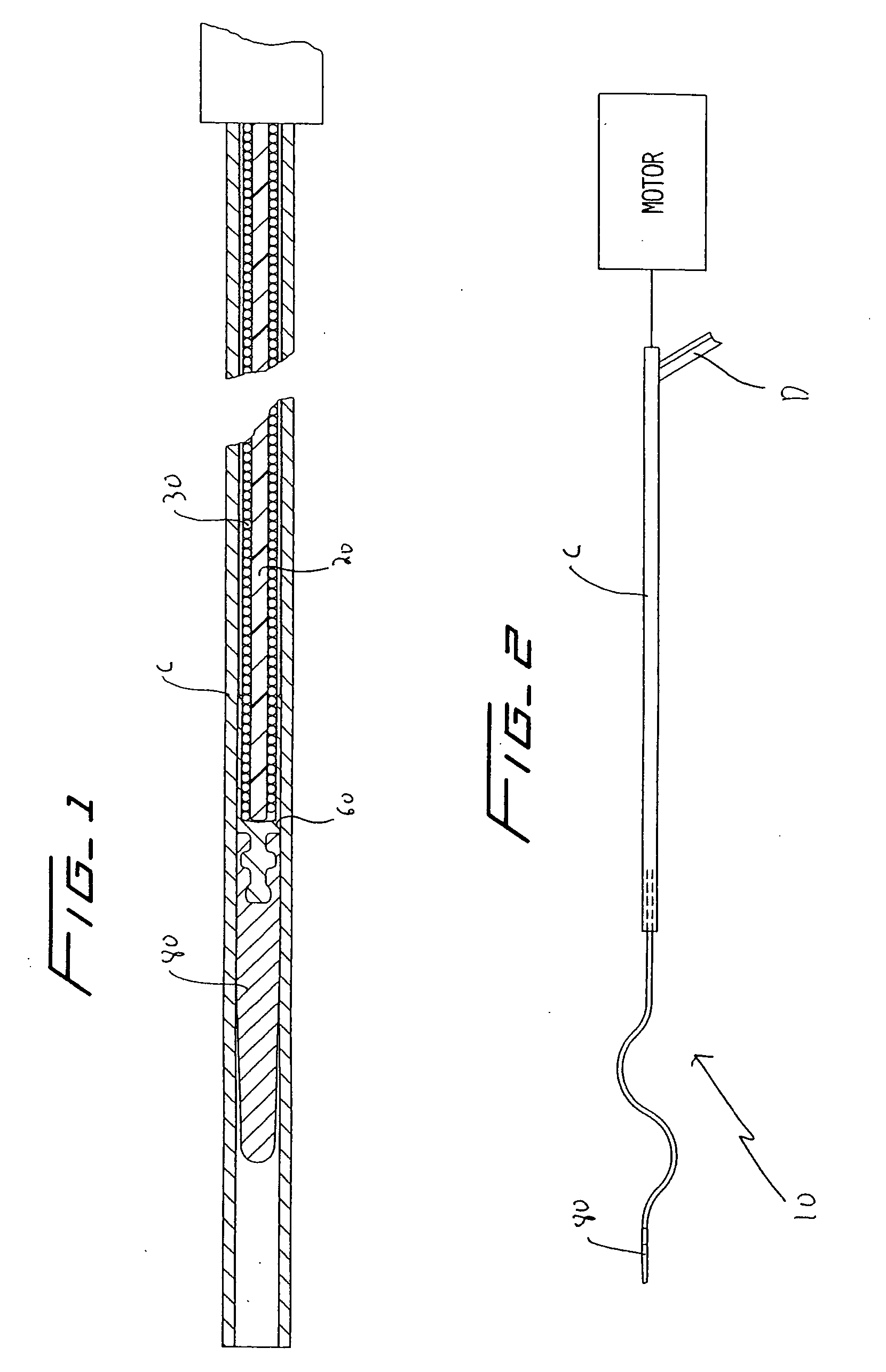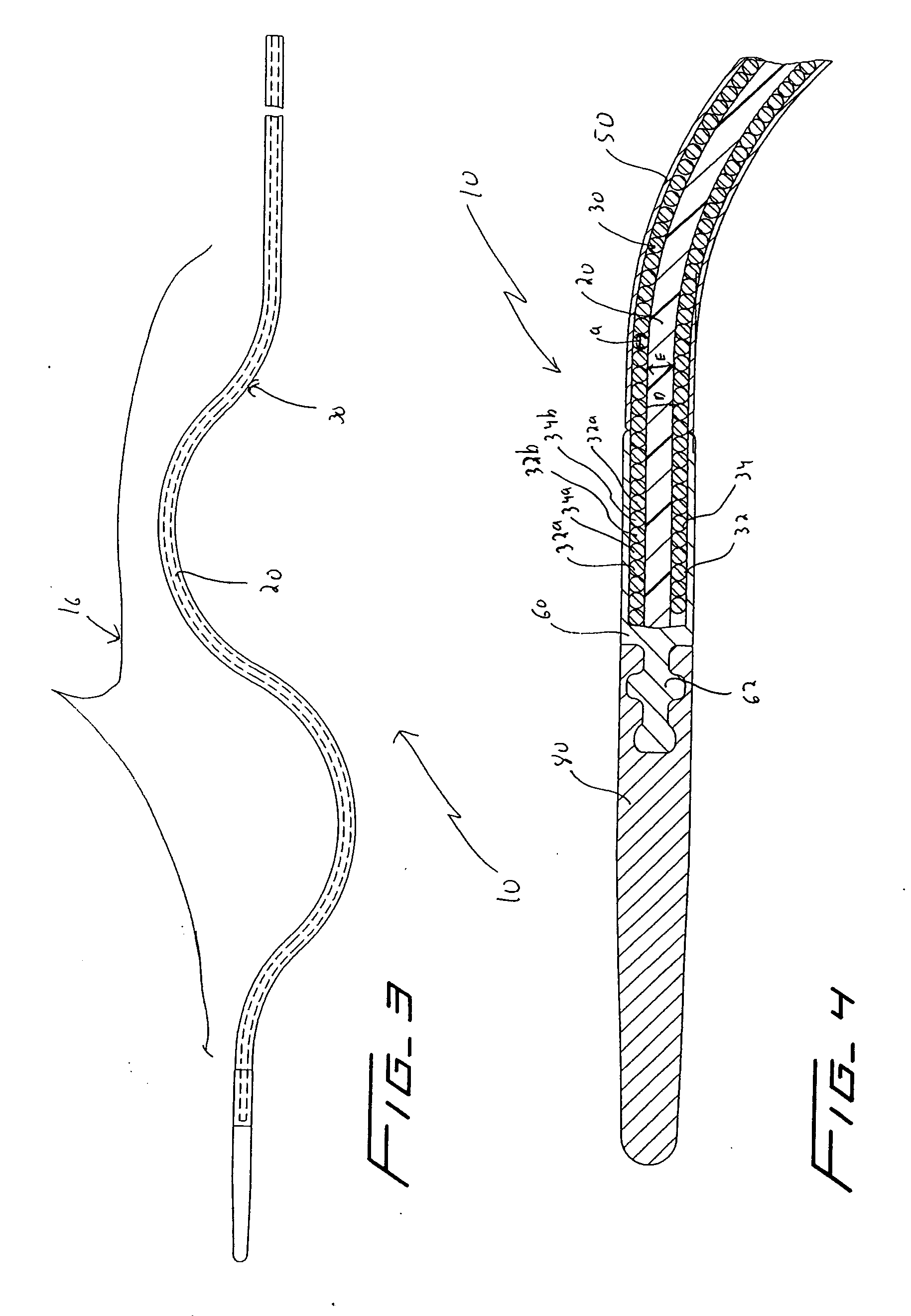Rotational thrombectomy wire
a thrombus or clot technology, applied in trocar, surgery, medical science, etc., can solve the problems of requiring longer hospital procedures, thrombosis or clots in the graft, vein failure, etc., and achieve the effect of limiting the compressibility of the multifilar wir
- Summary
- Abstract
- Description
- Claims
- Application Information
AI Technical Summary
Benefits of technology
Problems solved by technology
Method used
Image
Examples
Embodiment Construction
[0036] Referring now in detail to the drawings where like reference numerals identify similar or like components throughout the several views, FIGS. 3 and 4 illustrate a first embodiment of the thrombectomy wire of the present invention. The thrombectomy wire, designated generally by reference numeral 10, includes a core 20, a bifilar wire (coil) 30, and shrink wrap 50. The bifilar wire 30 is formed by two stainless steel wires 32, 34, wound together. As shown they are wound side by side so the cross-sectional area or diameter “a” of the wire fills the space between adjacent turns of the other wire. For example, turns 32a and 32b are filled by respective turns 34a, 34b as shown. Preferably the bifilar wire 30 has a length of about 30 inches and a diameter of about 0.030 inches to about 0.040 inches and more preferably about 0.035 inches. When used in deeper native vessels, e.g. deep veins of the legs or pulmonary circuit, the wire 30 can have a length of about 52 inches. Other dimen...
PUM
 Login to View More
Login to View More Abstract
Description
Claims
Application Information
 Login to View More
Login to View More - R&D
- Intellectual Property
- Life Sciences
- Materials
- Tech Scout
- Unparalleled Data Quality
- Higher Quality Content
- 60% Fewer Hallucinations
Browse by: Latest US Patents, China's latest patents, Technical Efficacy Thesaurus, Application Domain, Technology Topic, Popular Technical Reports.
© 2025 PatSnap. All rights reserved.Legal|Privacy policy|Modern Slavery Act Transparency Statement|Sitemap|About US| Contact US: help@patsnap.com



